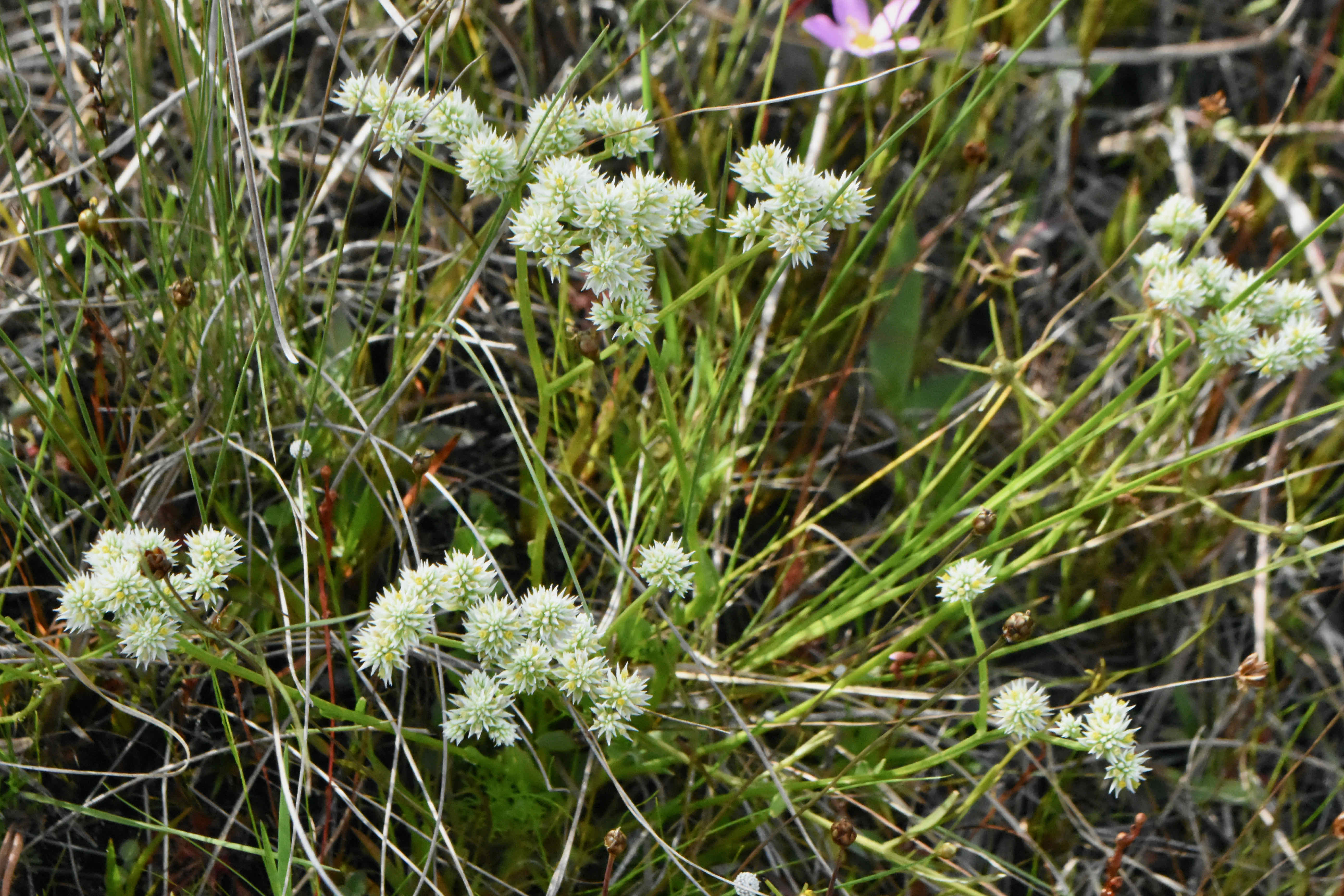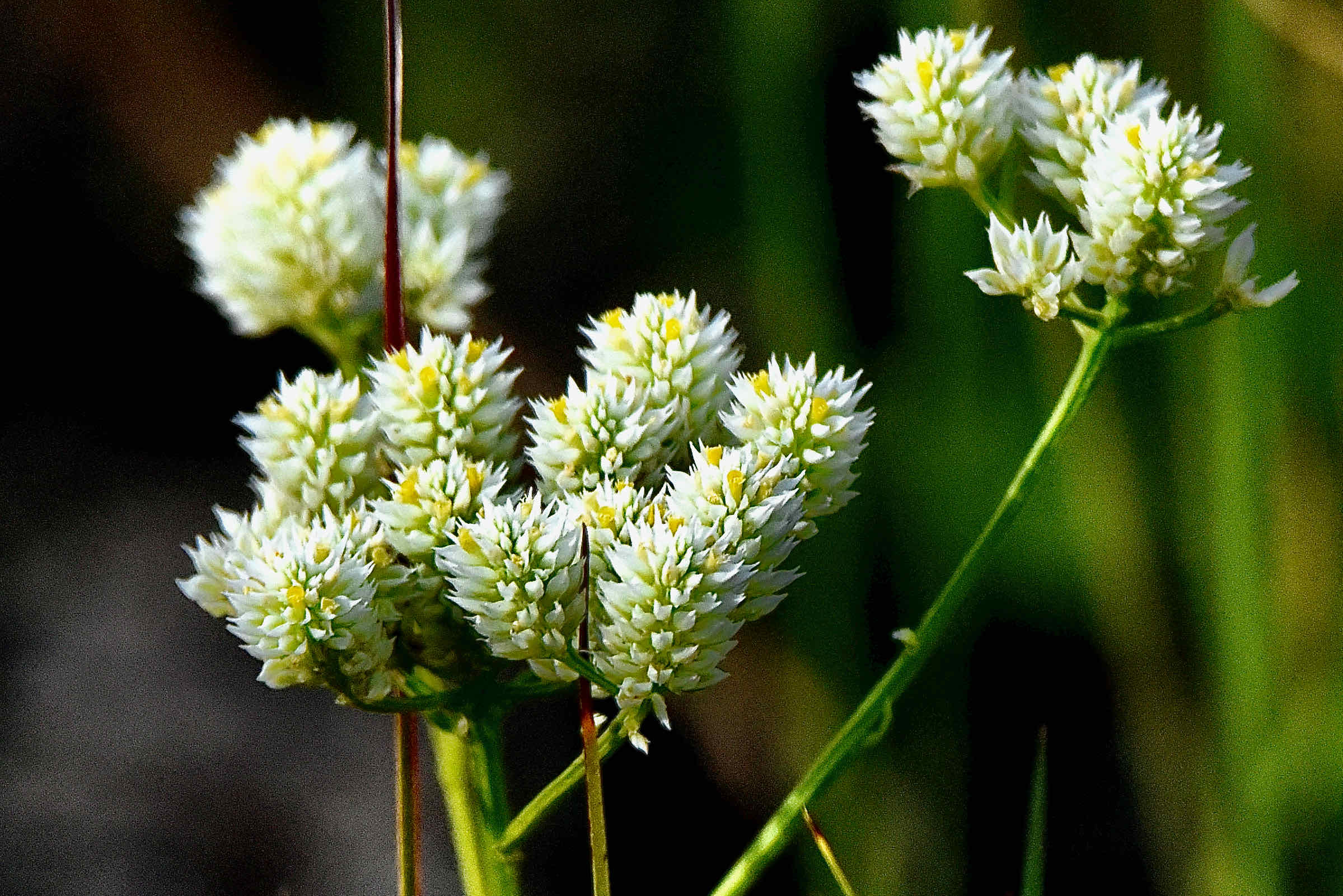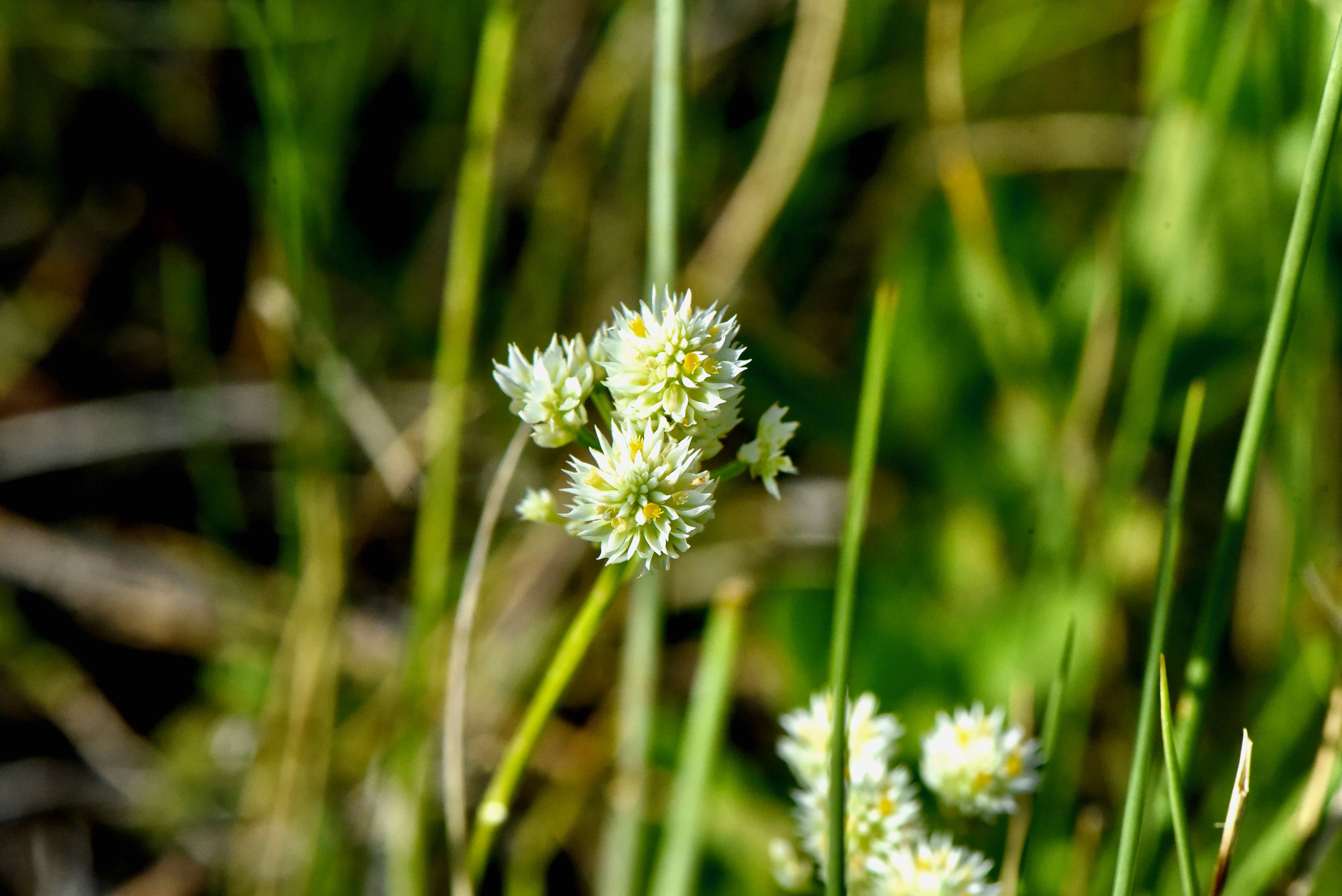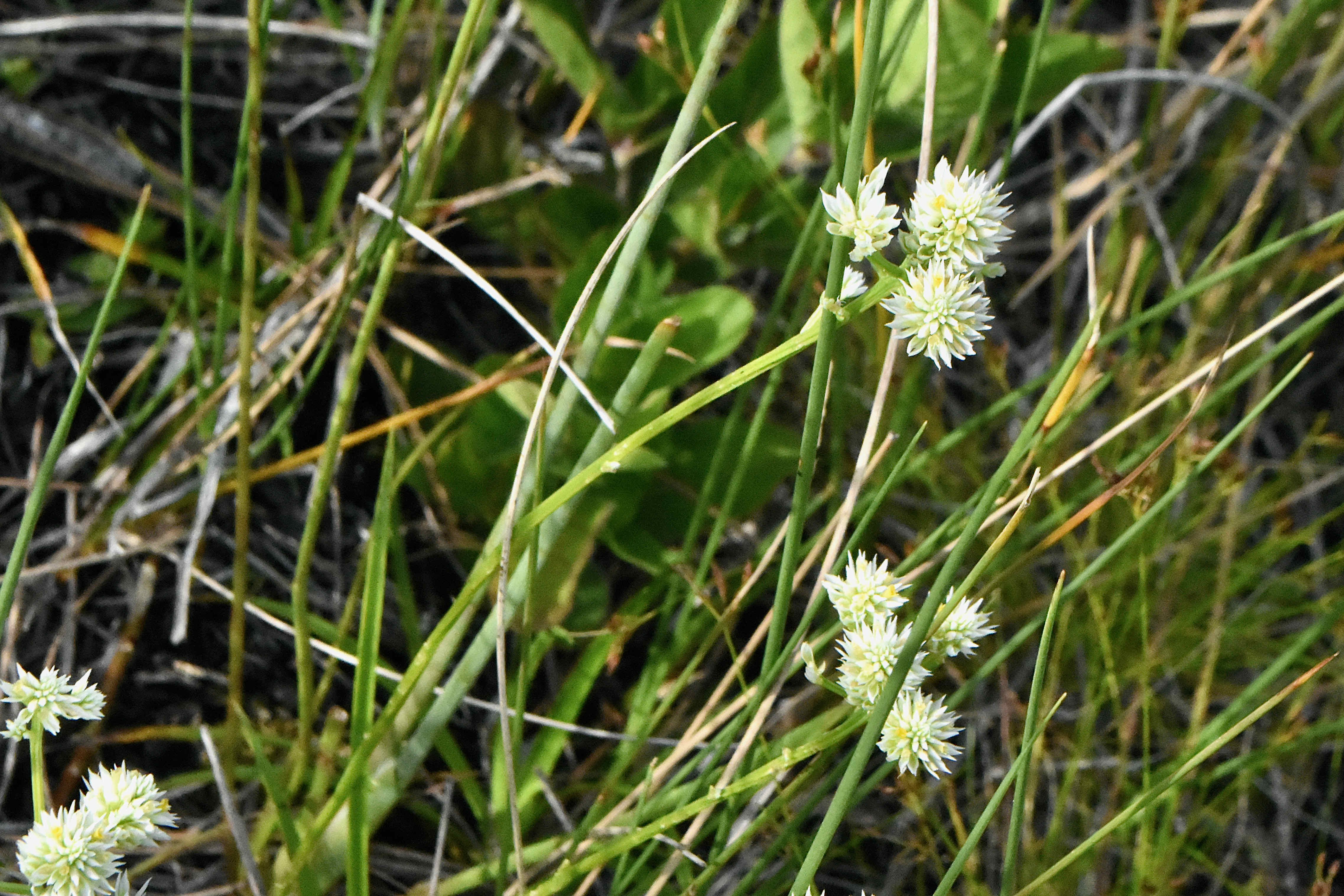
Baldwin's milkwort, photographed at J.W. Corbett Wildlife Management Area — South, Loxahatchee, Palm Beach County, in April 2022.
With its white and cream blooms, Baldwin’s milkwort lacks the brightly colored floral displays that many of its cousins sport, and its foliage isn’t much to look at either. But maybe because it is so different, maybe because of its relative rarity in our parts, Baldwin’s is still a cool sight to see in the wilds of South Florida.
Known scientifically as Polygala balduini, Baldwin’s milkwort is a Florida native found in most of the state, from the Panhandle, through the Peninsula and into the Keys. It’s also found along the coastal plains of Georgia, Alabama, Mississippi and Texas. The Bahamas and Cuba are also part of its natural range.
It is one of the few milkworts found in Florida with white flowers, but the form of the plant otherwise leaves no doubt that it is in fact a milkwort.
It’s an annual or biennial, found in moist to wet habitats: bogs, marshes, wet prairies, wet flatwoods — where we found these guys — and coastal swales. It grows a foot or two off the ground, apparently on the shorter side of that scale in South Florida. More on that in a bit.
Baldwin’s milkwort emerges in late winter, an inconspicuous basal rosette of leaves at first. From that a single stalk grows; dense clusters of greenish white flowers called cymes begin to appear atop branched stalks in early spring. Each branch has only one cyme but each branch can have multiple branches, each with its own cluster of flowers.
By the time the flowers begin to bloom, the leaves of the basal rosette disappear or begin to disappear; the remaining leaves narrow, elliptical in shape, alternately arranged along the stem. They’re also sessile, meaning there is no leaf stalk, and few in number. Both the leaves and the stalks are hairless, what’s known in botanical terms as glabrous.
Baldwin’s milkwort will produce flowers throughout the summer and into the fall. There are sources that say it will bloom throughout the year.
Milkworts get their name because it was once believed that their presence in a field indicated a good place to graze cows. The plants produced substances that supposedly stimulated lactation in grazing mammals. Let ol’ Bess munch away in a field where they’re present and she’ll produce plenty of milk for you. Polygala is a mashup of two Greek words: poly, meaning many, and gala, meaning milk. Polygala, many milk.
One notable feature of Baldwin’s and other milkworts: crush parts of the plant (not something we generally do or recommend) and you’ll smell something sweet or minty (some liken it to root beer), smiliar to those pain-relieving ointments sold in drug stores. That’s methyl salicylate, which is, in fact, the active ingredient in those ointments. It’s also chemically related to aspirin, aka acetylsalicylic acid, which is why they relieve achy muscles and joints. Just to note: the methyl salicylate in those products are synthetically produced.
Crushing parts of the plant releases methyl salicylate, possibly as a signal to the rest of plant to prepare for attack by bacterial invaders and/or plant-eating bugs. It also might attract predator bugs looking to snack on the herbivores.
So why is this Baldwin’s milkwort and who the heck is Baldwin? The answer to second question first: William Baldwin, an 18th and 19th century physician and botanist of note and no relation (that we know of) to the (seeming) scores acting Baldwins. Baldwin was a native Pennsylvanian who moved south hoping warmer weather would improve his health. He explored parts of the south including Georgia and Florida, describing the plants he found along the way.
His namesake milkwort was not one of those plants. It was Thomas Nuttall, another renowned naturalist of the era, who botanically described the plant in 1818, the year before Baldwin’s death, and gave it the species name balduinii to honor Baldwin. The Baldwin name is afixed to many plants, which gives you some idea of how important his work was viewed. Nuttall also gave the Baldwin name to the balduina genus of sunflowers.
One quick taxonomic note: Back in the 1970s, two scientists studying the plant divided Baldwin’s milkwort into two subspecies based on physcial differences seen in plants found in parts of South Florida and those found elsewhere.
The subspecies found in South Florida, var. carteri, was smaller and greener than plants found elsewhere, var. balduini, the scientists said. They noted that they also found plants that did not fit the description of either subspecies, nor could they clearly define geographic boundaries of the two. Occasionally, you’ll see references to the two subspecies, including in the links at the bottom of this page, but the division has never been accepted by the taxonomic powers that be.
Baldwin’s milkwort is also known as white milkwort. It is a member of Polygalaceae, the milkwort family.



